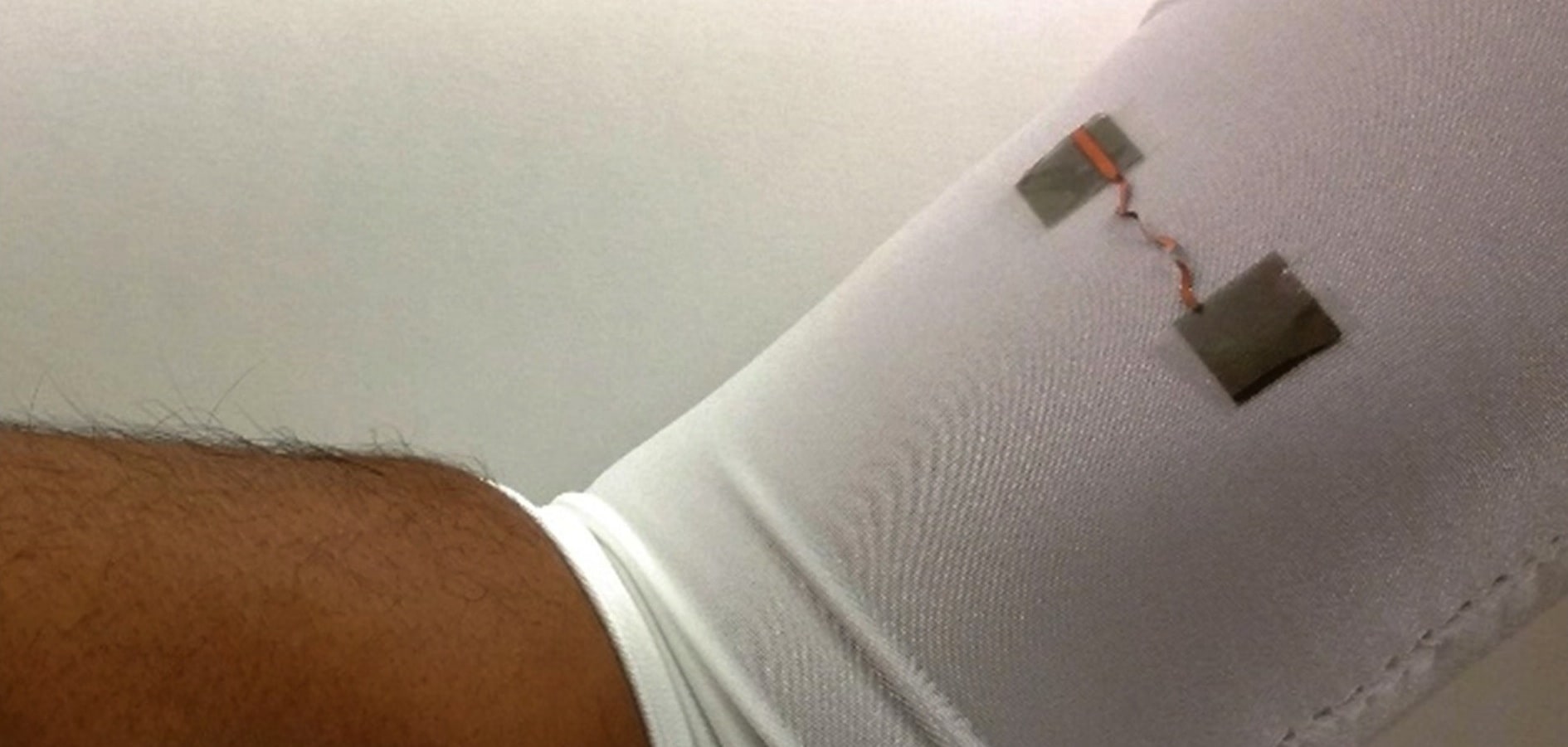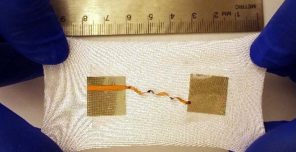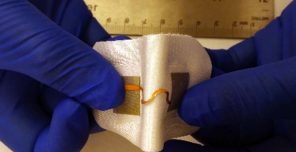Wearable Stretchable Antenna with Constant Frequency, Far-Field Communication Capability
The antenna stretches without change in radiation pattern ensuring uninterrupted communication on the go

Antennas are key components of all forms of modern communications – from Bluetooth to satellite phones. Antennas are basically metallic structures that radiate electromagnetic waves which can be used to carry information. While flexible patch antennas can be used to make flexible communication circuits possible, the fabrication of stretchable communication circuits is a challenge. Stretchable circuits can be of use in applications such as wearable electronics for continuous body vitals monitoring for advanced diagnostics. Such skin mountable electronics circuits require the ability to absorb some amount of strain (because of the stretchability of the skin). This is where a stretchable antenna capable of uninterrupted communication during stretching can be useful.
Technology Summary
Antennas are basically metallic structures wherein the shape and resistivity are optimized to allow for a certain radiative performance depending on a particular application. When an antenna is deformed, both the shape and resistance change thus changing the radiation properties in general. However, if the metallic structure is insulated from the strain of the deforming force, the antenna can be expected to radiate continuously at a constant frequency. We have achieved the decoupling of metal-thin film strain with the external deforming by using a specially designed thin film antenna.
How It Works
The antenna is designed using a special “horse-shoe” shaped meandering structure. When this structure is stretched, the shape deforms and twists out-of-plane at certain points. This deformation ensures that the metal thin-film does not come under strain, thus, eliminating the possibility of cracking. Since the metal does not change its properties, the resistance offered by the metal to the feed line remains the same. This ensures that the radiation performance of the antenna does not change with applied strain. The backing of the metal creates the restoration forces needed to bring the antenna back to the original shape once the deformation force is released. Further, the backing also increases the ease of handling of the antenna.
Why It Is Better
Several other designs of stretchable antennas use inherently stretchable materials such as nanoparticle/polymer composites or liquid metals. These techniques can be used to make stretchable antennas, however, the resonant frequency changes with applied strain. While this feature can be used for certain niche applications, in case of single frequency continuous communication, this will create a problem. The stretchable antenna developed by us eliminates the shift in frequency due to straining of the radiating element thus enabling continuous communication while straining. The stretchable antenna presented here is fabricated using low-cost, CMOS compatible and highly scalable process technologies.
IP Protection
KAUST has a patent pending for this technology.
Invention Track Code
2015-100

Benefits
- Antenna stretches up to 30% (can be increased with design optimization)
- The radiation pattern, parameters and bandwidth do not change with strain
- The elastic nature of the metal/polymer bilayer helps restore the original shape of the antenna when the deforming force is removed
- The antenna can be bent, twisted and stretched without loss of communication
- Low-cost and scalable thin-film-based fabrication process

Applications
- Wearable/skin mounted electronics wherein constant communication of data is required to and from the cloud while bending and stretching
- Soft-robotics (robots made from soft materials such as polymers) would require such stretchable thin-film antennas for communicating with each other and the host
